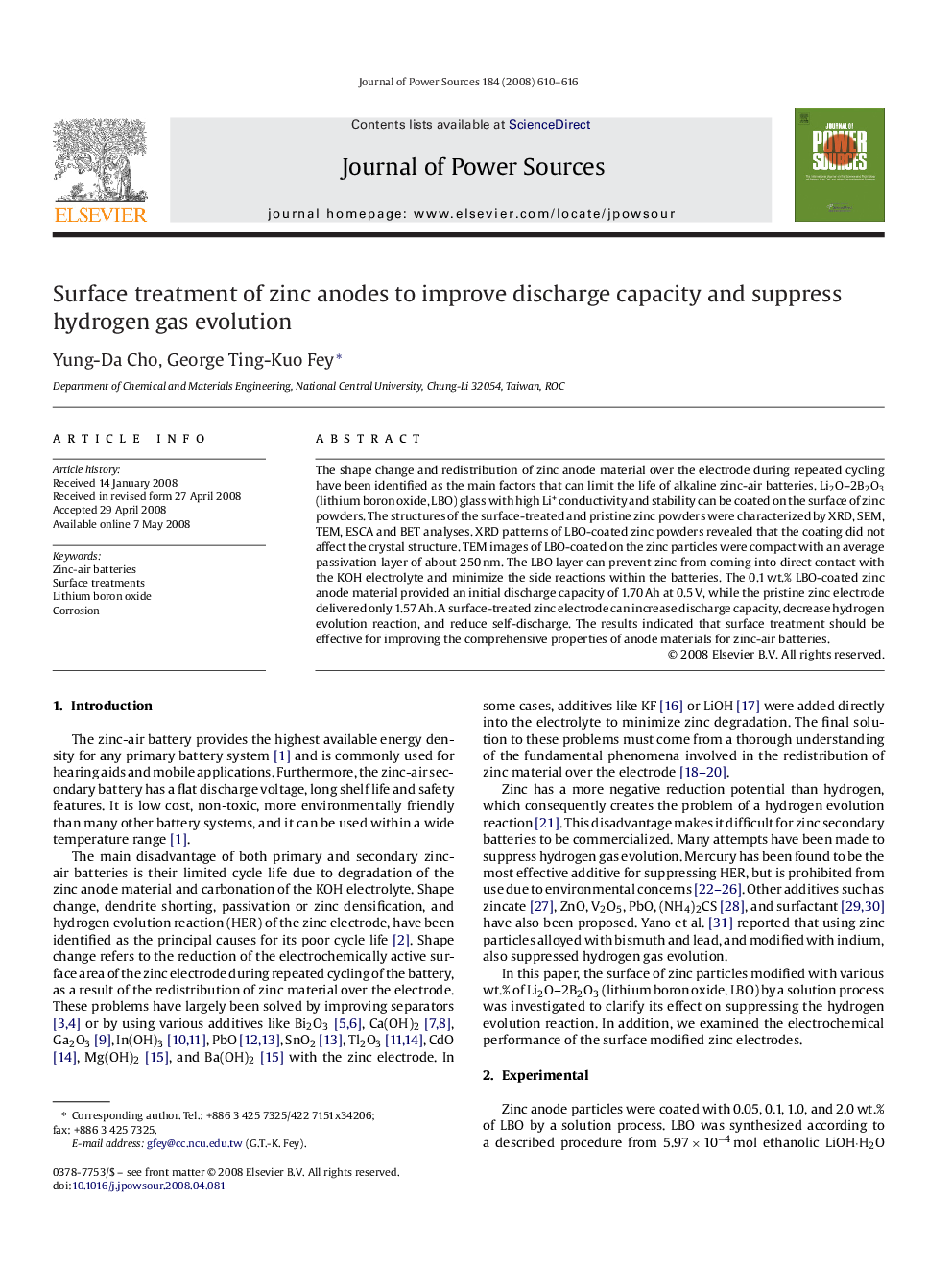| Article ID | Journal | Published Year | Pages | File Type |
|---|---|---|---|---|
| 1294532 | Journal of Power Sources | 2008 | 7 Pages |
The shape change and redistribution of zinc anode material over the electrode during repeated cycling have been identified as the main factors that can limit the life of alkaline zinc-air batteries. Li2O–2B2O3 (lithium boron oxide, LBO) glass with high Li+ conductivity and stability can be coated on the surface of zinc powders. The structures of the surface-treated and pristine zinc powders were characterized by XRD, SEM, TEM, ESCA and BET analyses. XRD patterns of LBO-coated zinc powders revealed that the coating did not affect the crystal structure. TEM images of LBO-coated on the zinc particles were compact with an average passivation layer of about 250 nm. The LBO layer can prevent zinc from coming into direct contact with the KOH electrolyte and minimize the side reactions within the batteries. The 0.1 wt.% LBO-coated zinc anode material provided an initial discharge capacity of 1.70 Ah at 0.5 V, while the pristine zinc electrode delivered only 1.57 Ah. A surface-treated zinc electrode can increase discharge capacity, decrease hydrogen evolution reaction, and reduce self-discharge. The results indicated that surface treatment should be effective for improving the comprehensive properties of anode materials for zinc-air batteries.
